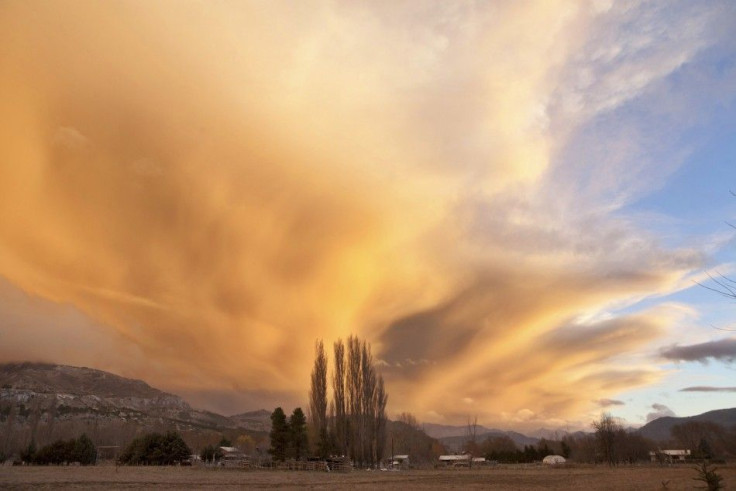Scientists to Test Artificial Volcano to Cool The Earth

To tackle manmade climate change, scientists will investigate the feasibility of a geo-engineering project by building an artificial volcano, which will appear in the British county of Norfolk next month.
Scientists and engineers from the universities of Bristol, Cambridge and Oxford, together with those from Marshall Aerospace, have initiated a project called SPICE (Stratospheric Particle Injection for Climate Engineering).
In order to investigate the best kind of particle to be released in the atmosphere, they plan to float a huge helium balloon size of a football stadium, attached to the ground by a giant hosepipe. The pile will pump light-scattering particles into the stratosphere to reflect the sun's rays.
It will cool the earth relatively quickly, showing a similar effect to a large volcanic eruption spewing out clouds of sulphate droplets which can have an impact on the climate.
Particles of clay, salts or metallic oxides suspended in liquid are believed to have greater effective than the sulphates produced by real volcanoes.
While the first test which will take place on a disused airfield at Sculthorpe, north Norfolk in October will send the balloon to a height of 1km, scientists hope to inject particles into the stratosphere at 20km up eventually.
Construction of artificial volcanoes to alter climate is considered as the last option to be used only when it is impossible to bring carbon emissions under control.
The three-year 1.6 million pound ($2.5 million) project is a controversial and potentially alarming subject, project leader Dr Matt Watson from Bristol University said. The project's cost, feasibility and sustainability are in need of further investigation.
We hope that by carrying out this research we will start to shed light on some of the uncertainties surrounding this controversial subject, and encourage mature and wide-ranging debate that will help inform any future research and decision-making.
A number of geo-engineering programs have been proposed to mitigate the ongoing climate change by reduced greenhouse gas emissions.
Reducing incoming solar radiation by injecting sulphate aerosol into the stratosphere was considered the most rapidly deployable, affordable and effective option by the recent Royal Society report on Geoengineering the Climate, says the SPICE team. Volcanic eruptions provide evidence that sulphate particle injection leads to lower temperatures. However, there are concerns that there will be substantial regional impacts, on temperatures, rainfall and other aspects of climate. There are also uncertainties concerning how rapidly injection might act, how quickly it could be 'turned off' and whether the climate responds differently to continued injection of aerosols compared with the episodic nature of volcanic eruptions.
The SPICE project will investigate the effectiveness of stratospheric particle injection, evaluating the best candidate particle and its ideal quantity, delivery method, and likely impacts of the injection.
SPICE is the first UK project aimed at providing some much-needed, evidence-based, knowledge about geoengineering technologies, says Watson.
The project itself is not carrying out geoengineering, just investigating the feasibility of doing so.
© Copyright IBTimes 2025. All rights reserved.





















